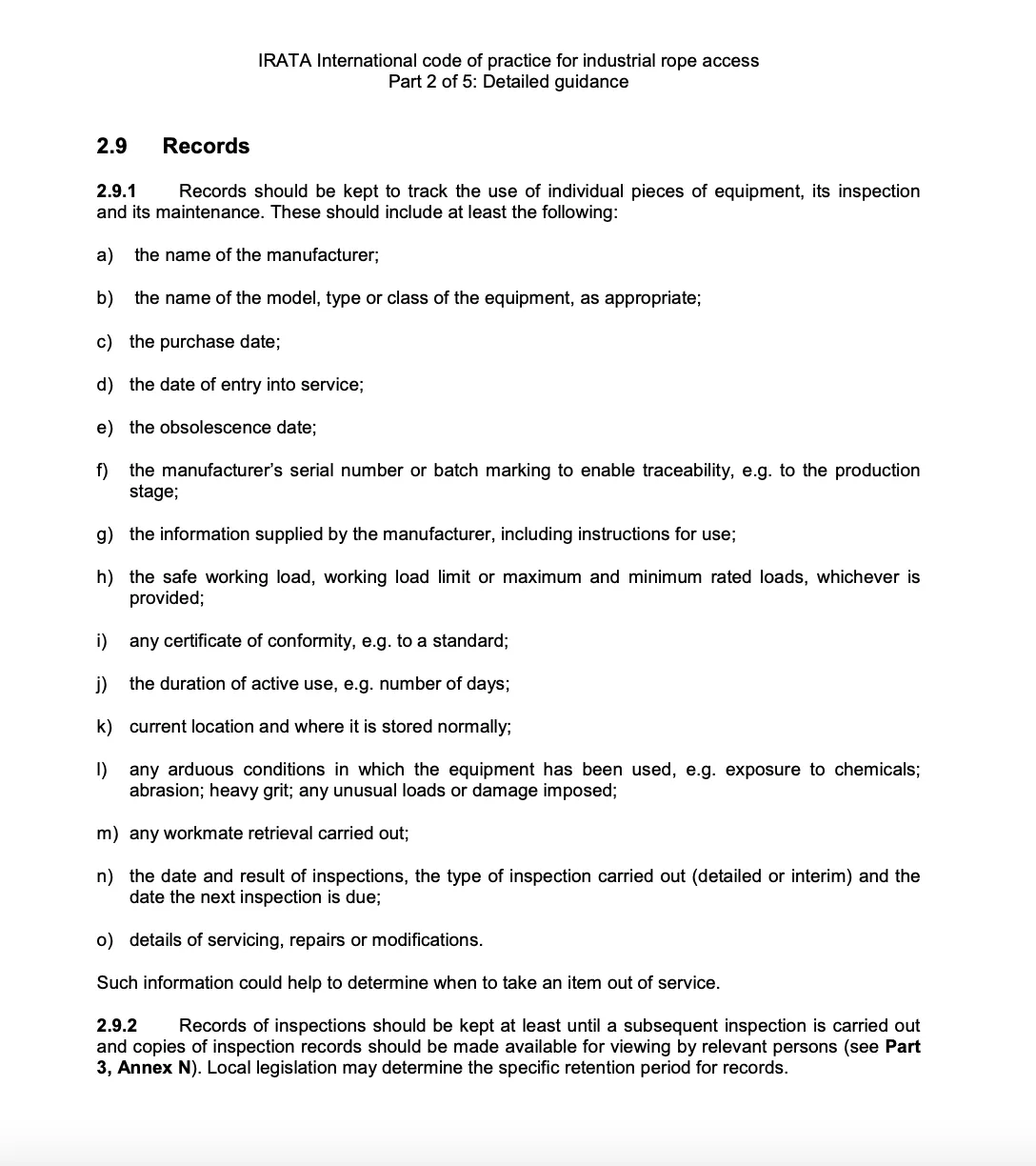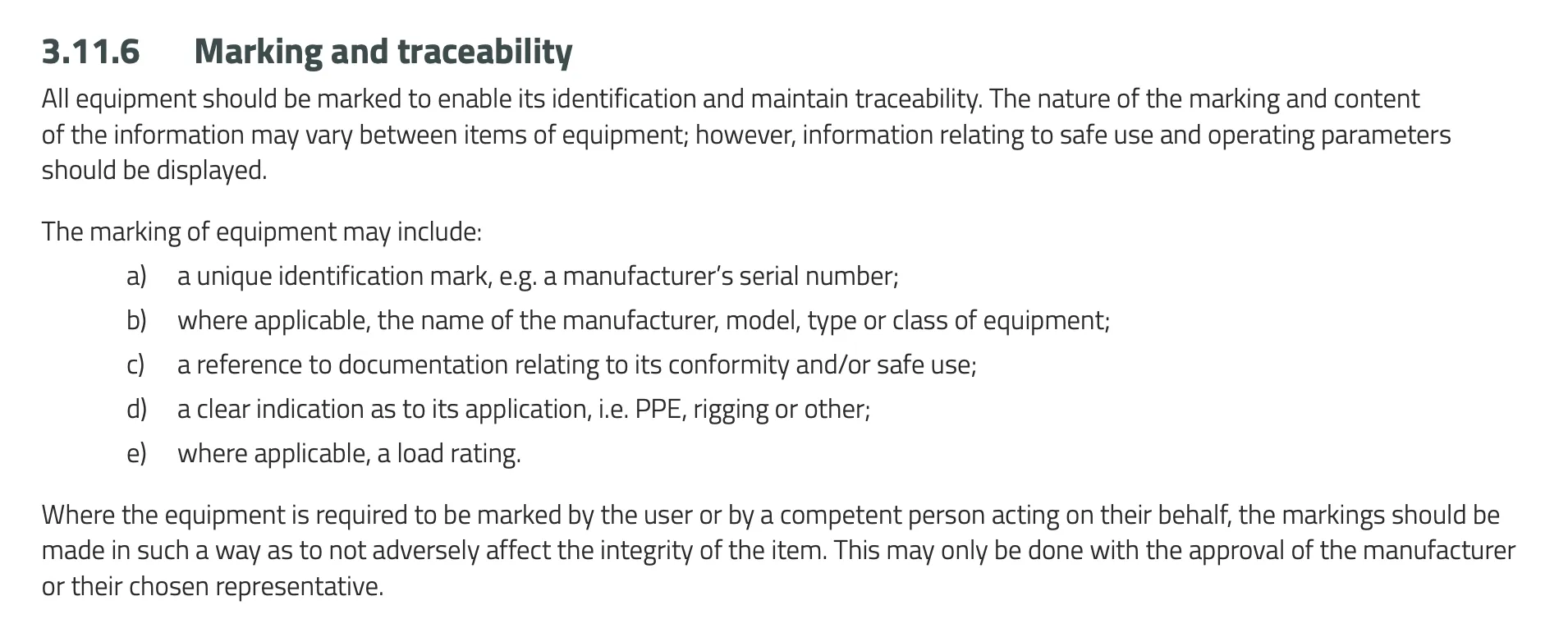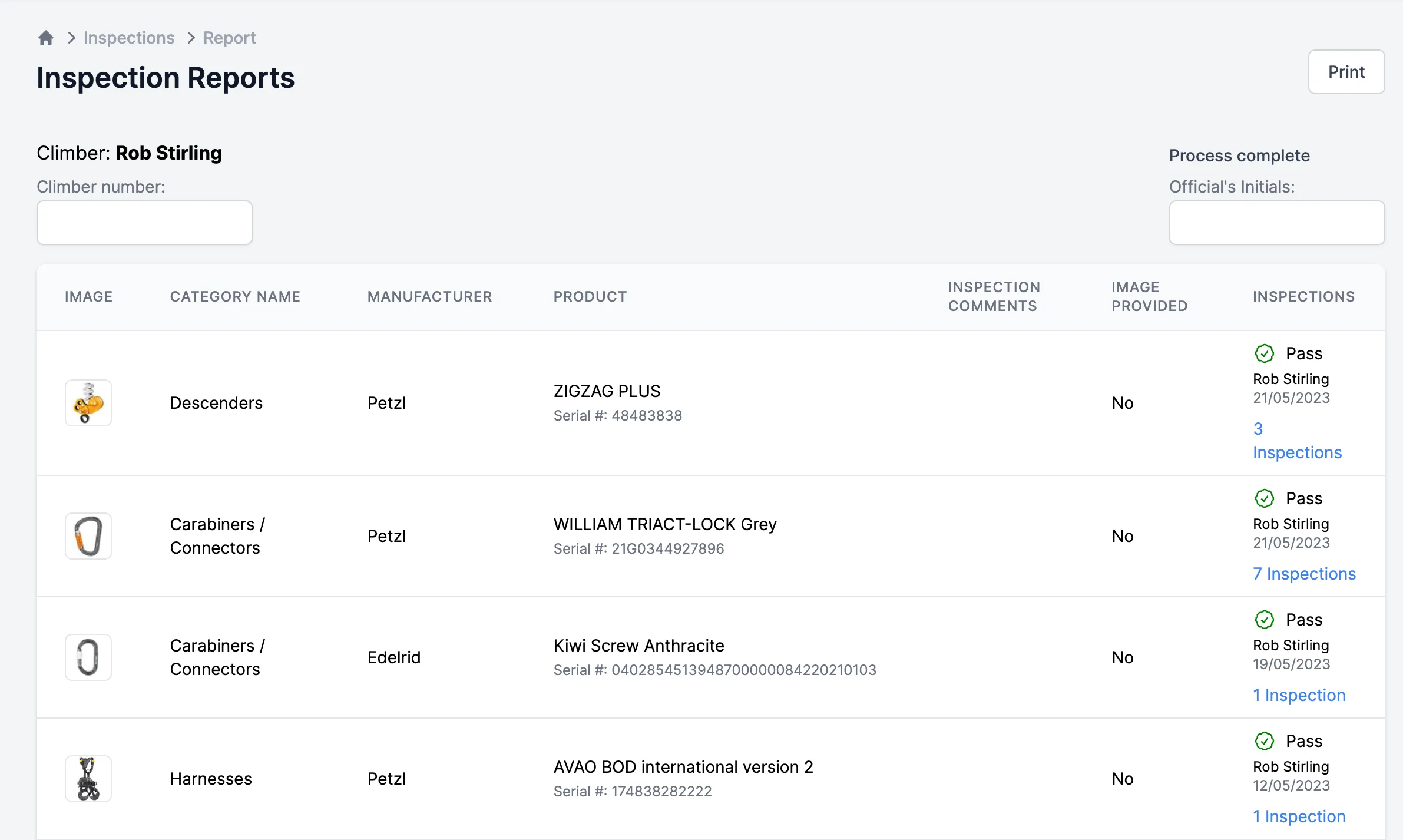

About the author:
Jess Garland is a former IRATA Level 3 rope tech, she spent 9 years dangling from ropes on a wide variety of sites before hanging up her harness to start a family. She continues to use her practical experience from a keyboard with Scannable.
When it comes to equipment inspection and maintenance requirements, should compliance be our target, or should we as an industry be aiming for higher standards than what regulations ask for?
In the words of Luke Anear (Safety Culture), “Compliance is a terrible goal... The law is the minimum standard for society, it's not best practise.
If that [compliance] was your standard for parenting, you'd be the worst parent on your street.”
Nobody wants to be the worst parent on the street. We believe the same for equipment management. You don't want to be the worst at inspections and maintenance—your life depends on doing it well.
It’s common for Work-at-Height Codes of Practice to ask for equipment to have individual serial numbers.
This a higher standard than legal requirements.
The importance of regular equipment inspections and maintenance is emphasised no matter which regulations we are working under or what documentation we turn to for best practice within our fields.
All equipment should be inspected before it is put into service, and it should be checked before each use.
Additionally, thorough and regular maintenance and inspection audits are an important way to assess wear on gear.

The only way to accurately trace equipment through inspection audits is to assign each item a unique identifier and trace its life with regular inspections and comprehensive inspection result logs.
IRATA, SPRAT, and the Arboricultural Association lay this out as a necessity, however not every regulation, standard, or best practice guideline in the Height Safety industry ask for the same stringent requirements around traceability.
The below table shows that while it is not required to give items a unique identifier when working under certain regulations, maintenance is essential.
Inspecting and maintaining equipment reliably is not possible without being able to identify each individual piece of gear in your kit.
This is especially relevant in work at height, where it is common to have multiple items that look identical.
Best practice documents call for every piece of equipment to have a unique identifier as well as the serial or batch number for the product.
Here are some examples:
The IRATA International Code of Practice (ICOP) 2.9.1 lists a very specific set of information that must be included in an item's records.

IRATA has the most stringent inspection requirements: a batch number and the ability for unique identification of each item of equipment, as well as the thorough inspection of the equipment every six months, recorded in a log, along with any maintenance carried out.
The Arboricultural Association’s marking and traceability requirements are detailed in their Code of Practice (3.11.6), as below.

ANSI/ASSP Z359.2-2007 American National Standards Section 5.5.2 requires an authorised person to inspect fall protection equipment at least once at the start of every eight-hour shift.
Beyond that, a competent person must also audit the equipment on “a regular basis not to exceed one year.”
The standard states that equipment must be inspected as per the manufacturer’s instructions.
The standard has very specific product labeling requirements; there is a uniform system for users to identify ANSI-compliant equipment. This is done by applying a hazard classification system, as well as using designated colours and safety signal words as detailed in ANSI Z535.
The standard does not specify how a user must give products a unique identifier.
Equally, LOLER and PUWER do not specify that batch, serial, or ID numbers are required, but there is a clause that talks about equipment markings:

LOLER Regulation 7 details the requirements for clearly labeling or otherwise making available details of the safe working load of each piece of lifting equipment or accessory, which is aimed as a precautionary for the equipment to be used in the correct application rather than it being identifiable for inspection purposes.
Manufacturers are not required to give each item of PPE equipment a unique ID.
Many are traceable by batch—in case of recalls—but this does not help the end user when it comes to logging the life cycle and inspection records of the individual item of equipment.
It's unmistakable that best practice guidelines set out clearer and more specific inspection and maintenance requirements than Regulations.
Calling for an item of equipment to be individually identifiable is a key part here, as it's not possible to accurately perform or record inspection and maintenance on your equipment if you can't identify one item of equipment from the next.
We’re on a mission to make identifying your equipment effortless.
With Scannable, you can create a comprehensive list of equipment including an items’ serial number and date of first use.
Inspection results including photo and notes can be easily recorded against each item of equipment, with inspection history reports available for download, turning the arduous task of managing inspection paperwork into a streamlined process.
.webp)
Our NFC tags make it easy to individually identify your equipment.
Each NFC tag is linked exclusively to the item of equipment it's attached to, and paired with that item's data in our database, making it easy to accurately identify your equipment and see its history!
When you pair equipment with our NFC tags, you can access manufacturer specifications and compliance documentation, and record inspection results including notes and photos - all at the tap of a phone!

Detailed inspection reports are also available in the Scannable web app.
We're also helping resellers to create serial numbers for every cut or spliced length of rope—which means ropes you can actually identify!
Working at height, we literally have our lives on the line.
Trust in our PPE is paramount.
Regular inspections and maintenance of our equipment is essential for our safety, and whatever documentation we turn to, regulations or industry standards and best practice, the importance of regular equipment inspection and maintenance is outlined.
For this process to be reliable, we need each item of equipment to have a unique identifier.
Don't be the worst parent on the street - level up your safety and do more than the bare minimum to achieve compliance.